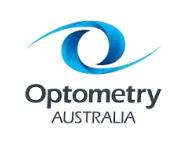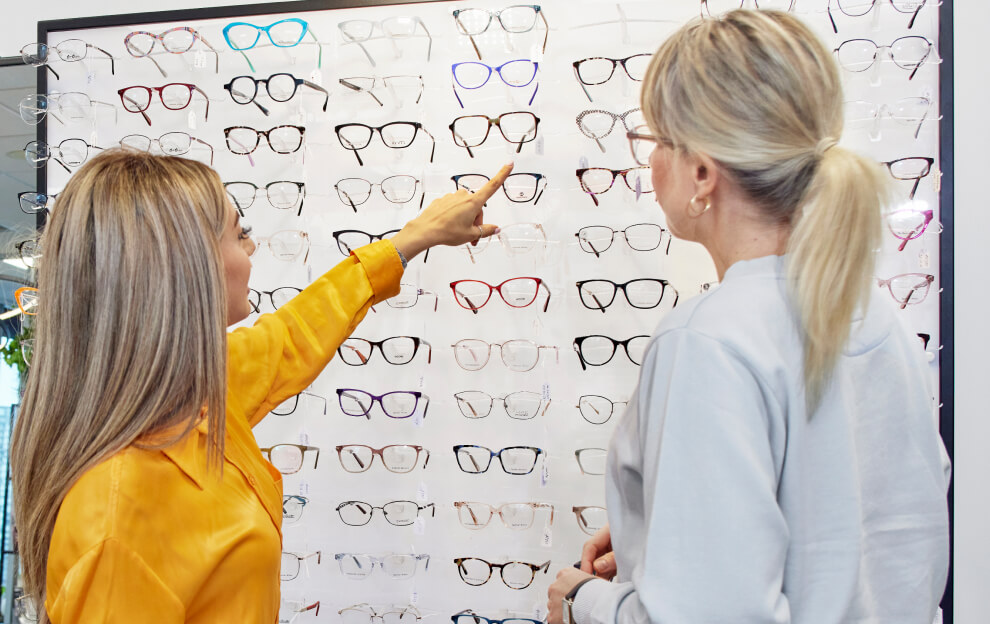Lazy Eye Treatment – Amblyopia
Lazy eye, or amblyopia, is a condition that occurs due to a number of different underlying causes. This is addressed via supportive and change orientated Microprism lens and prism configurations.
Find Out MoreWhat is Lazy Eye?

Lazy eye, or amblyopia, is a condition that usually begins in infancy. Baby lazy eye can easily occur when the child favours the use of one eye over another. This can happen due to a number of different underlying causes. The weaker eye may not look too much different than the stronger eye, which can sometimes make it hard to detect.
In the case of baby lazy eye, mothers might notice that when they cover one of their child’s eyes, the child cries or fusses. This usually means you’re covering the good eye and the child cries because they can’t see properly out of the weaker eye due to the amblyopia condition.


Why Does Lazy Eye Occur?
Because of the complex nature of our eyes, there are many lazy eye causes, and these change depending on whether it happens for children or adults. As we’ve mentioned, babies might begin to rely more on one eye than the other due to one being less reliable than the other. What would cause one eye to perform better than the other? There are a few possible culprits.
The most visible cause would be a squint, which is not uncommon. People with a squint will have one eye which can focus directly ahead while the other does not follow but stays fixed off to the side. This manifests as someone who appears to be looking in two different directions. Eventually, the unfocused eye will be more ignored by the brain while processing images, and this can lead to lazy eye.
Diagnosis & Lazy Eye Treatment in Toddlers

It’s quite common for parents to seek lazy eye treatment in toddlers, as the amblyopia becomes apparent and parents are concerned about children being ready for starting kindergarten. If you suspect something is wrong with your child’s vision, seek out a lazy eye specialist.
Our behavioural optometrist in Docklands , Dr Michael Christian PhD, can give a correct lazy eye diagnosis. As our approach is behavioural and holistic, our eye examinations take into account more possible causes than your typical optometrist. This is especially important when diagnosing lazy eye in children.
It’s always best to get a lazy eye diagnosis as soon as possible. This is true of lazy eye syndrome in adults or in children. If left unchecked, lazy eye can cause permanent disability and even legal blindness. The sooner you get a lazy eye diagnosis, the sooner you can embark upon lazy eye correction interventions.

Benefits of Lazy Eye Treatment:
Increased confidence and appearance
Improved vision
Comfortable relaxed vision
Improved energy levels
Improved ability to perform tasks
Greater awareness

100-Day Perfect
Prescription Guarantee
It’s important to us that you love your new lenses and are confident you’ve made the right choice. So, if you start wearing them and experience discomfort or see no improvement, you can return to us any time within 100 days of purchase. We’ll re-test your eyes, make any adjustments and replace your prescription lenses free of charge.
Experience the Latest in Lazy Eye Treatment with Microprism Optics
At Microprism Optics, we work at the cutting-edge of developments in behavioural optometry. Our Docklands clinic takes a holistic approach, making full use of the most current technologies for vision therapy for adults and children. We can prescribe glasses and a range of other therapies to help correct your eye condition. Call us today to book in for an eye exam on (03) 9606 0330. Read More
Why Does Lazy Eye Occur?
Because of the complex nature of our eyes, there are many lazy eye causes, and these change depending on whether it happens for children or adults. As we’ve mentioned, babies might begin to rely more on one eye than the other due to one being less reliable than the other. What would cause one eye to perform better than the other? There are a few possible culprits.
The most visible cause would be a squint, which is not uncommon. People with a squint will have one eye which can focus directly ahead while the other does not follow but stays fixed off to the side. This manifests as someone who appears to be looking in two different directions. Eventually, the unfocused eye will be more ignored by the brain while processing images, and this can lead to lazy eye.
Still, for some people, the cause is less obvious. Astigmatism and myopia can both lead to lazy eye. Conditions like these can develop in one eye while leaving the other totally unaffected, which can create a major discrepancy in the quality of the images your eyes send to your brain. When left untreated, your brain might neglect input from the afflicted eye, which eventually becomes lazy eye.
In other words, any major discrepancy between what your eyes are saying to your brain can potentially lead to lazy eye. Your brain craves the most reliable sensory input possible; if one eye isn’t offering that, it may simply be forgotten, in a sense.
Lazy Eye Symptoms
Someone afflicted with lazy eye may need to tilt their head to see properly.
A squint can occur in basically any direction, but lazy eye usually causes one eye to drift dramatically inwards or outwards. A lazy eye specialist like ours can confidently tell the difference.
Lazy eye might also leave someone closing one eye much of the time for no apparent reason.
This condition also has an adverse effect on a patient’s depth perception. Lazy eye treatment often involves rehabilitation for this among other issues.
Lazy Eye Treatment for Adults with Behavioural Optometry
If you’re concerned about lazy eye surgery cost, don’t be worried. Surgery is only necessary in some instances, and with the recent innovations in vision therapy for lazy eye in adults, there are many other options. If you see our Melbourne’s lazy eye specialist Dr Michael Christian, he can conduct a thorough eye exam and advise on the best lazy eye correction methods to suit your particular eyes.
We take a holistic approach to vision therapy for lazy eye in adults, helping the muscles of the weaker eye to gain strength naturally. You may not even need surgery, as we offer alternative treatments such as lazy eye glasses and Vivid Vision Virtual Reality Therapy that can gently yet effectively correct vision.
Experience the Latest in Lazy Eye Correction with Microprism Optics
At Microprism Optics, we work at the cutting-edge of developments in behavioural optometry. Our Docklands clinic takes a holistic approach, making full use of the most current technologies for vision therapy for lazy eye in adults and children. We can prescribe lazy eye glasses and a range of other therapies to help correct your lazy eye. Call us today to book in for an eye exam on (03) 9606 0330. Read Less
Associations and Registrations








Here’s How It Works…
Book In An Eye Test or Tele-Consult
If you’re ready to get started, there are 3 options to choose from. You can schedule a free 360° vision screening test, or you can book a comprehensive Quantum Photo Somatics test of your vision and eye health. If you’re unsure, and you’d like more information – book a free 10-minute, no-obligation telehealth consultation with our team.
We Find Out More About Your Vision
You’ll discuss your vision with our experienced optometrist, then we’ll devise a treatment that’s tailored to your specific needs and vision. This will include the use of Microprism™ lenses and prisms that aim to stop deterioration and improve your eyesight.
Follow Our Treatment Plan
Your new Microprism™ lenses will ‘work out’ your eyes as you wear them. They aim to change the way your eye muscles work, while supporting how your brain processes visual information… an integrative approach that has helped 1,000s of our clients improve their vision and health.
Monitor Results And Adjust Accordingly
The aim of your treatment plan is to improve your eyesight, mind and body function within 6 months – an aim we’re serious about achieving. If there is no improvement after wearing your Microprism™ lenses, we’ll make adjustments and replace your prescription free of charge!
Hear What Clients Say About Us…
Need More Information?
Take A Look At Our FAQs
We help a range of vision and other health related problems by redirecting how light is presented to the body. People present with a range of issues including but not limited to:
- Sensitive eyes
- Poor vision
- Frustrated with vision
- Worsening vision
- Balance issues
- Complex issues
- Subconscious issues
- Low energy
- Low motivation
- Vertigo
- Dizziness
- Dyslexia
- Double vision
- Post stroke
- Post accident or injury
- Closed brain injury
- Concussion
- Post trauma
- Depression
- Anxiety
- Emotional stress
- Stress
- Psychological issues
- Physical ailments
- Physical injuries
- Aches and pains
- Mobility issues
- Visual processing
- Performance and learning issues
- Turned eye
- Dry eyes
- Lazy eyes
- Nausea
We take a unique approach to vision and eye health by holistically and dynamically assessing vision, mind and body as a complete unit, working on conscious and subconscious levels.
Our unique methodology, Quantum (Energy) Photo (Light) Somatics (Body Movement) (QPS) has been developed by Dr Michael Christian. QPS supports Optometry and is an endorsed and accredited field with the IICT (International Institute of Complementary Therapies) myiict.com.
It engages a real time integrative feedback system of many factors, making adjustments, counter checks and further adjustments through the process.
Light uniquely and appropriately refracted through lens and prism combinations support and change factors such as breath, posture, balance, muscles, energy, nerves, emotions, movement and body functions, which in turn aims to positively affect the eyes and vision.
Once we understand the wearers profile, we prescribe balanced, highly customised, activating lens and prism prescriptions. These lenses aim to change the way the wearers eye muscles work while supporting how the brain processes visual information.
Just as you work out your body with weights and movement, the glasses we prescribe act as a personal trainer for your eyes that are designed to work just by wearing them, without the hassle of boring and limited time-consuming eye exercises.
The lenses aim to also encourage improvement of health conditions that are linked to, being caused by or exacerbated by poor vision, while aiming to avoid the usual deterioration of vision commonly experienced by long-term glasses wearers. The eyes affect the mind and body, and the mind and body affect the eyes.Both need optimal support. These links and relationships are thoroughly investigated in depth for each person.
Just as good air, food and water provides integral fuel for the body, good light, presented correctly, provides integral fuel for vision and mind.
The function of your eyes has a flow on effect to the rest of your mind and body. Just as changing any nerve or muscle group in the body does.
Microprism integrative prescriptions are derived by focusing two eyes together in specific binocular refractive patterns for clear perspective and detail discrimination. In Microprism progressive lens manufacturing, the prism is located in unique non-traditional active locations to ensure clear, open, comfortable and dynamic vision. Microprism directional prisms (up, down, in and out summations) are located differently and affect eye muscles, changing eye shape and location and the perception of objects within a space. The internal shift on eye muscles via the incoming prism re-directed light, effects and brings into alignment and balance, how near, distance and perspective are observed. This ideal state of alignment brings ease to the optical, motor and sensory system and has a positive flow on effect to the rest of the body. Light feeds the whole biophotonic transduction system of the body.

Check Out Our Industry-Leading
Eyewear And Optometry Services

NOT SURE IF THIS COULD WORK FOR YOU?
Book A Free 360° Vision Test
Since 2001, Microprism Optics’s have helped over 9,315 people to improve their vision and eye health, and it all started with a free 10 minute, 360° vision test!
You’ll try on prism lenses while we test your vision under real world conditions – seated, standing, walking, at a distance, and in close range to a screen and objects. You’ll experience the benefits of prism first-hand!
Book your free test with us today and start your journey to better vision.


